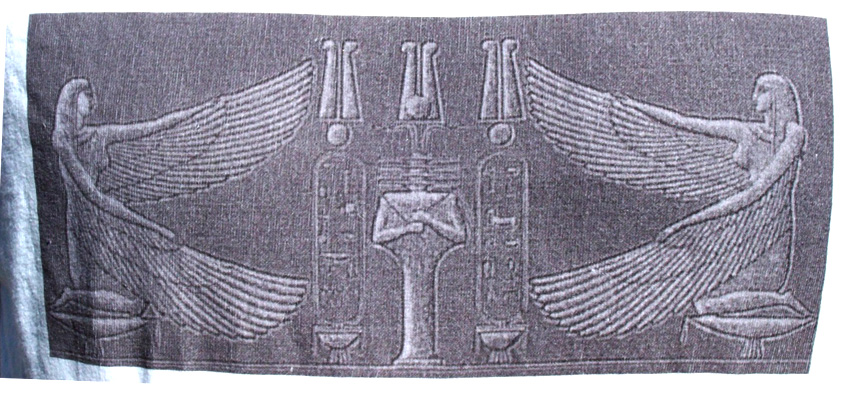Blog - What don’t I get? / What don’t you get?
This blog is currently under construction. Below are questions I will use to open discussion.
What have I left out?
What dates do you disagree with?
What arguments are not convincing?
Any recommended books to read?
Not all questions may be answered. Not all comments may be posted.

Abstracted from a book by William Henry called ‘Starwalkers and the Dimensions of the Blessed’, this glyph clearly depicts Osiris in the center position. The four tiers on the pillar in his neck position is the classic depiction of the djed pillar which is the most ancient of North African symbols for the other world. It is said to form the backbone of Osiris.
This glyph also is a wonderfully pictorial representation of the classic Christian doctrine of the Trinity as well as one that is in alignment with our understanding of nuclear physics. The center figure can represent Christ. The winged figures probably represent Hathor but also can represent the Holy Spirit replete with wings and femininity—which originally was the gender of the Holy Spirit from Egypt to Syria. Even the multiplicity of Holy Spirit figures resonates from The Gospel of Philip to Clement of Alexandria (who conceived of the Holy Spirit as a collection of ‘powers’). The two figures flanking Osiris-Christ can represent the bifurcation of the androgenous Primal Adam into the duality of our masculine and feminine souls. All the little doo-dads within those two figures represent our soul experiences. The two round circles where the heads should be represent the consciousness of the Father. The round circle of Osiris-Christ, however, is depicted as being on a higher plane outside of duality. This would be the consciousness of the Un-manifest Father acting within the high plane of the androgeny of the Mother-Holy Spirit. (1)
The bifurcated head-dress represents the polarities of the masculine and feminine within the Mother/Holy Spirit. Almost invisible in this depiction are a rams head and horns splayed out directly below the head-dress of the Djed pillar. This is an ancient Egyptian symbol of divinity. The curled rams horn represents the string of string theory as conceived by the Dogon as a spiral and as present in their diagram of the Nummo Fish as ‘fins’. The string is what vibrates different ways and creates all that is. Below the string-rams head are four pillars always common to the Djed pillar depictions. These represent the four quantum forces of the elemental universe: the strong force, the weak force, electromagnetism, and gravity.
1. G.R.S. Mead, Fragments of a Faith Forgotten, (1901) See www.sacred-texts.com “Simon Magus”, “Aeon”